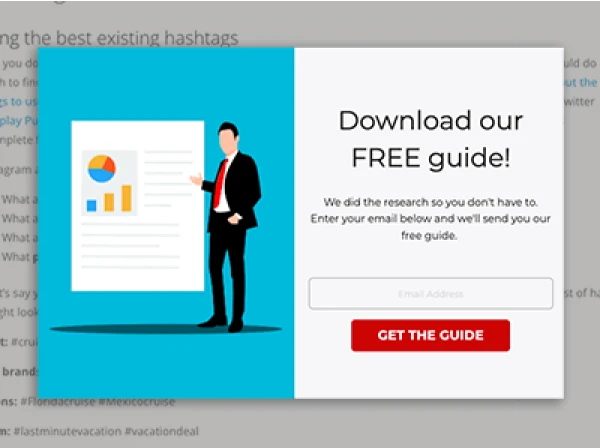Marketing campaigns have a lot of moving parts…Goals, budgets, tasks, landing pages, creative, and much more.And that’s not even considering the human element - a complex mix of personalities, agendas, and work styles.The success of a marketing campaign comes back to the cohesive delivery of all of these elements in pursuit of a common goal. Cohesion, between your team, clients, and other stakeholders, refers to the quality of the output generated by forming a united whole.Too often campaigns are orchestrated in isolation. One person looks after the landing pages, someone else does the ads, another person pieces together the creative. While there is probably a generic campaign brief shared among the team, collaboration is at a minimum and it materializes as brand inconsistency or poor results.So how do you effectively collaborate on marketing campaigns and create cohesion with your team? Here are 5 tips to help you out.
#1. Hire the right team
Regardless of how good your internal processes are, if you don’t have a team that gels, then it could all be wasted energy. It’s critical to hire people who share similar values and fit in with the company culture.What is the “right” team? Well, that depends on your business, however here are some tips for putting together a winning marketing team:
- Select people with complementary skills and experience. It’s no good having a team of Facebook ad experts and no designers or copywriters.
- Lean towards “soft” skills and shared values. Soft skills (interpersonal skills) such as emotional intelligence, leadership, and communication are considered more important by HR professionals than hard (technical) skills. Former Porsche CEO, Peter Shutz, famously said “Hire character. Train skill.”
- Don’t chase perfection, because it doesn’t exist. There is no set formula for hiring a great team. Imperfection can actually be your friend because it breeds diversity.
The team you compile to execute a marketing campaign will never be perfect, but if you focus on building a diverse team with strong interpersonal skills and aligned values, you’re on a path to success.
#2. Establish a project timeline, goals, and specific roles
Much of the success of a marketing campaign comes down to how well you plan.There are three critical questions you need to answer when it comes to planning:
- What are your goals for the campaign?
- What timeframe do you want to achieve those goals in?
- What needs to be done and who is going to do it?
The concept of setting a goal for your campaign might sound generic, but you’d be surprised how often people within a team make assumptions about where they should spend their time. If one person thinks the purpose of a campaign is to generate brand awareness, another thinks leads are top priority, and another is solely focused on sales, the campaign will be disjointed.Chose a clear set of goals, and focus every element of your campaign on achieving them.When setting your goals, make sure they are timebound and extremely specific so there is no room for interpretation.“Generate leads” is far too generic, instead you may say something like; “Get 50 sales qualified leads in 10 days.”Once you have a clear goal, it’s easier for the team to collaborate on a timeline and set of activities that will combine to achieve that goal.You can create project timelines and assign tasks to team members using a tool like Asana.

Organizing marketing campaigns with Asana
#3. Clarify communication channels and guidelines
According to a McKinsey research study, people spend 28% of their workweek on emails - that number only increases when you collaborate with remote teams.Inbox overload… it’s a common symptom of, well, working in business!But emails can get even more cluttered when you’re orchestrating a marketing campaign. You’ll be sharing agendas, strategies, budgets, guidelines, marketing copy, and more. It’s really easy to miss something important or skim over information.Here are a few tips for improving the effectiveness of your team communication during a marketing campaign. Be sure to determine...
- WHERE you should communicate. Keep as much as possible out of the email inbox. Use collaboration tools such as Slack and Google Workspace to streamline your team’s communication and document sharing, so you can prioritize strategic tasks for scheduled meetings or daily update emails.
- HOW you should communicate. Have some rules for when communication should take place. For example, don’t use meetings to cover basic information or easy-to-fix challenges, spend your time together focused on the strategic agenda. Eliminate things such as “reply all” emails or “catch up” meetings unless they are absolutely necessary.
- WHEN you should communicate. Identify appropriate windows of time for communication. You may have a regular standup meeting, Zoom call, or update email, and everything else is covered in Slack, for example. This allows people to focus a majority of their day on getting things done rather than consumed by meetings and emails.
The most important rule of communication is sticking to what you say you will do. If the manager breaks the communication guidelines it’s a bad precedent for everyone else to follow.With a clear set of guidelines for where, how, and when you will communicate as a team, you’ll be significantly more productive.
#4. Provide training material
It’s unlikely you’ll be running a marketing campaign with the same exact team every single time. There may be contractors, agencies, or new employees involved in executing the campaign all with different experience levels and perspectives on what best practice looks like. Vague instructions and assumptions can destroy a campaign before it even gets going.Training material and resources, such as brand guidelines, business strategy documents, step-by-step videos, and other collateral help to develop consistency regardless of the team members that are working on a campaign.Good training material leaves no stone unturned. It comes in multiple formats (video, audio, and text) and documents processes down to minute details. Over time, you can optimize this documentation to improve the performance of your team at delivering on campaign objectives and expectations.Lessonly is one platform that streamlines the process of training teams and setting everyone up for success.

Team training platform, Lessonly
#5. Give up control
Too often in a team environment the dominant voice gets their way. Micromanaging and a “my way or the highway” style of communication is highly ineffective at getting the best outcomes from a team. Many people in a team are naturally shy or introverted, stopping them from putting ideas forward. Yet, their ideas could be the difference between success and failure.Making sure each individual in a team has a voice and is well-represented in the delivery of your campaign is essential. Sure, the manager should check-in, keep the team on track, and help them solve problems, but they shouldn’t take complete control and scrutinize every individual task.If you hire the right team, provide adequate training material, and set clear communication guidelines and project objectives, you’ll set the team up for success. But then, you need to give up control and let them do their work.
ShortStack for Teams
ShortStack’s Agency and Brand Plans include a Teams feature that allows you to add clients and coworkers to your account so that you can collaborate on campaigns, lists, media, custom templates, themes and monitor analytics.With this feature, the account owner can assign access roles, control content visibility, organize collateral with tags, and synchronize everyone’s efforts in one place.

ShortStack's Teams Feature
Get started with SHortStack for Teams today
Get Started TodaySign up for our free trial today. No commitments, cancel anytime.
About the author
Will Blunt is the founder of Sidekick Digital by Will Blunt - B2B Marketing Expert - Sidekick Digital, a publishing business that launches, manages, and grows brands with content marketing.
Recent posts
Go back to blogGet marketing tips straight to your inbox
Launch an irresistible giveaway. Get started for free.
Join 630.000+ marketers that are boosting engagement and sales.













